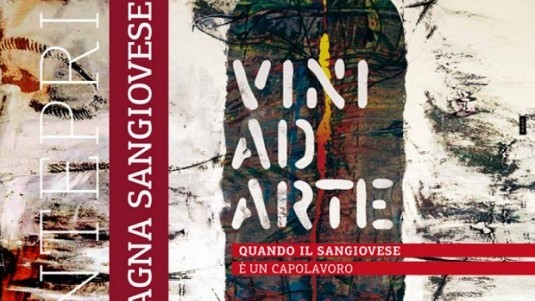Some thoughts on Romagna

What is the state of wine in Romagna? What does the future hold? Reflections on the Sangiovese of Romagna and the various wines it produces.
At the end of February, after the Tuscan previews, we went to Faenza , in the region of Romagna , for Vini ad Arte (Artfully made Wines), a preview of Romagna Sangiovese wines. The event is excellently organized and every year become bigger. The location is also excellent, in a grand hall in the Ceramics Museum , as is the service offered by the sommeliers present. The key to its success is the synergy between the producer associations Consorzio Vini di Romagna and the Convito di Romagna which allowed for a broad choice of wines from many estates and wineries.
The tastings were seated and blind and focused on Albana Secca (Dry) and Passita (Sweet) and various kinds of Sangiovese – including Superiore, Riserva and so on – from four different vintages. In my view, regulations governing production should be simplified to make it easier for foreign journalists who get lost in a forest of appellations. And if you add the 12 geographic indications this forest become dense indeed making everything more complex and difficult to understand and communicate.
I will spare you a rundown of the retrospective tasting of the older vintages, not because of the quality of the wines as much as the fact that there were too many and some were not up to par and, above all, the confused way the tastings were conducted. The event was saved in part by two authentic professionals like Fabio Giavedoni of Slow Food and the ever-present Francesco Bordini, a talented young enologist and great expert on Romagna.
The tasting offered some food for thought and suggestions on the wines which for us were a confirmation. I almost felt sorry for those trendy wine lovers who are affected any an acute ‘Burgundy-itis’, which in Romagna has become ‘Modiglianitis’ and the anti-barrique activists and this because the only wines that maintained the aromas of the varietal, had pleasing tannins, conserved a certain progression in the mouthfeel and that did not seem like acidic and bitter zombies were those wines aged in small barrels from fairly dense vineyards and made in a careful and rigorous way . In other words, wines made by those who had more experience, skill and, why not, even more money to invest in the vineyard and the winery. Among these are Drei Donà, Zerbina, Nicolucci, Villa Papiano and Tenuta La Viola.
Further reflections came from the interesting visits to wineries that were organized in an intelligent way. In large and comfortable wineries we tasted wines from different estates which was an excellent way to save time and offered an opportunity to compare the various production styles directly with the producers who were always on hand.
The new vintages demonstrated how Romagna is clearly on the upswing with many good wines, a good awareness of what the area offers, extremely competitive prices and new estates rising on the quality horizon.
In the area open to the public it was possible to taste other wines that demonstrated how Romagna is not just Sangiovese and Albana. On this topic I would like to single out two very interesting varietals: Pagadebit, a white wine grape, and the red Centesimino, which is very characteristic and is growing in quality.
So what is happening on the Sangiovese front? The improvement mentality-wise is evident with an end to making wines from over-ripe grapes and an overuse of barriques which had become invasive and produced mediocre wines and this benefitted the whole sector. Sweet Sangiovese wines are also disappearing. The result is that Romagna is now beginning to express itself with a great variety of wines thanks to the different soils and exposures.
On the downside from me is the model or style that some are adopting adopted and appears “strongly suggested” or imposed to obtain recognition. The model involves an anemic subtleness, a war against small barrels that seems more a battle cry than an awareness that the problem was their improper use and not the size of the barrel. In other words, a model that seeks to impose a single standard, one popular among the trendy wine lovers: Modigliana.
Modigliana is a particular zone that has a sandy soil and fairly low temperatures that produce elegant and acidic wines. And while this is well and good, it should not become a standardized model for all Romagna wines. In fact, Modigliana can even be considered an exception among Romagna wines. For me, there are even better areas in regard to complexity, like Predappio, Brisighella and some Bertinoro, and I admire the fact many estates that have not bowed to pressure to follow the Modigliana fad like Drei Ronà, Fattoria Zerbina, Nicolucci or Podere dal Nespoli, just to name a few.
It bothers me to taste lithe, Modigliana-like wine from Predappio because they betray a zone that is historically famous and produces particular characteristics. And I am bothered when estates and wineries change enologists or production philosophies just to follow a fad because what will happen when the trend changes? Small questions and small considerations for a region that is capturing my interest with the unique characteristics of its wines which up until ten years ago were unimaginable.
What is important now is not to go chasing trends towards standardization but to continue down the road taken with an awareness that the differences are what make a territory great.
The following list is of the wines best wines tasted in alphabetical order according to estate.
Romagna Doc Sangiovese Superiore 2015
Bissoni, Girapoggio 90
Ca’ di Sopra, Crepe 88
Drei Dona, Notturno - Predappio 90
Noelia Ricci, Godenza 89
Tenuta la Viola, Colombarone 88
Romagna Doc Sangiovese Riserva 2014
Fattoria Nicolucci, Vigna del Generale - Predappio di Predappio 89
Tenuta La Viola, Patri Honorii 89
Romagna Doc Sangiovese Superiore Riserva 2013
Stefano Berti, Calisto 90
Bissoni, Vigna Collecchio - Bertinoro 91
Bissoni Riserva - Bertinoro 93
Calonga, Michelangiolo 90
Condè, Raggio Brusa - Predappio 91
Drei Dona, Pruno 93
Fattoria Zerbina, Pietramora - Marzano 93
Poderi dal Nespoli, Il Nespoli 90
Tre Monti, Petrignone 90
Villa Papiano, I Probi di Papiano - Modigliana 94
Villa Bagnolo, Bagnolo 92

 Italiano
Italiano








